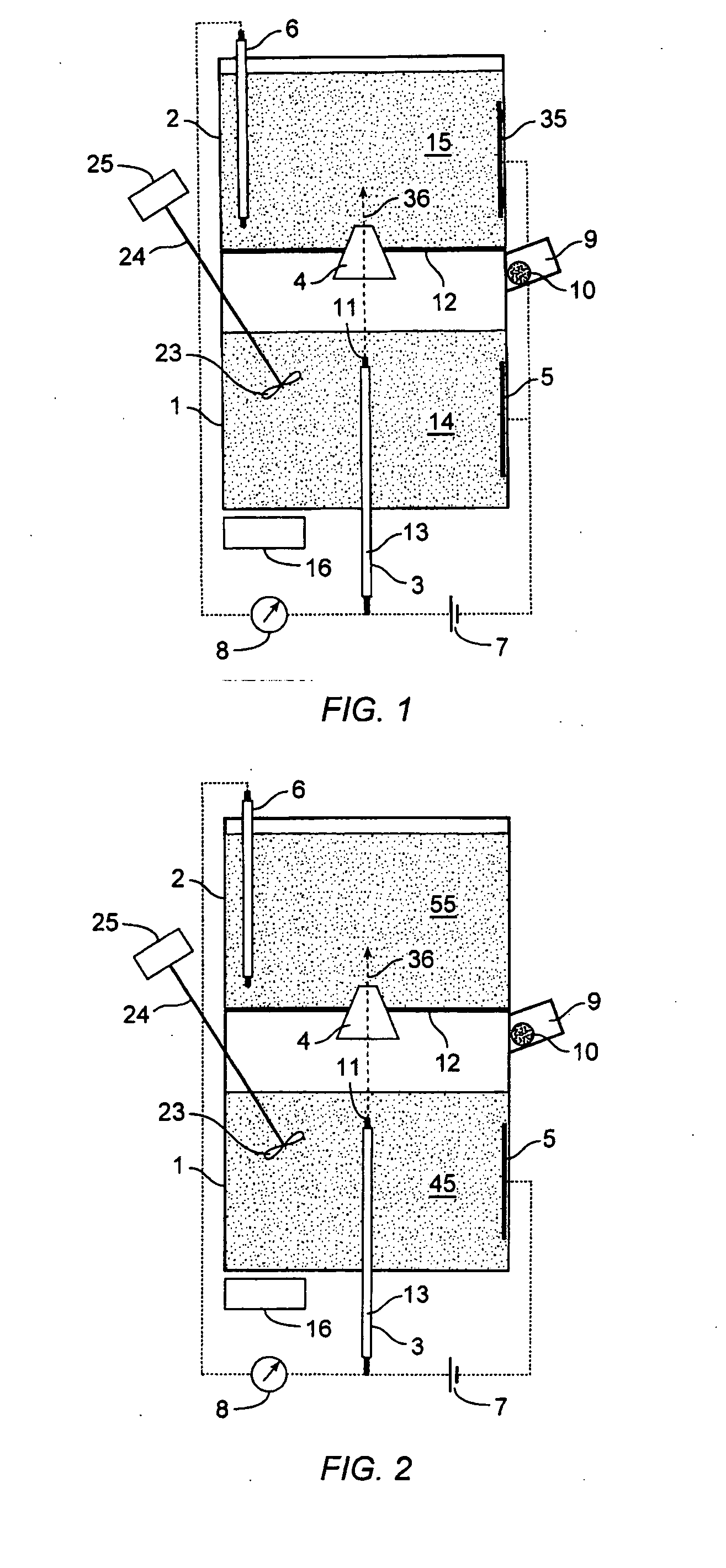Detection of mercury in biological samples
a biological sample and detection technology, applied in the direction of instruments, material electrochemical variables, testing food, etc., can solve problems such as system function, brain damage, kidney damage, cardiovascular and immune system damage,
- Summary
- Abstract
- Description
- Claims
- Application Information
AI Technical Summary
Problems solved by technology
Method used
Image
Examples
example
[0031] Fish solutions which contain known amounts of mercury were used for calibration. A 2 g fish (salmon) sample which was known to contain no mercury was added to a plastic container which contained 0.2 g of solid KClO3. 2 ml of 12 M HCl was then added into the mixture. A calibration solution of Hg(NO3)2 was then added after chlorine began evolving. Separate tests were conducted having known mercury concentrations of 0, 0.5, 1 and 2 micrograms that correspond to 0, 0.17, 0.33 and 0.67 ppm in the solution. Electrolysis of each solution was conducted using an aluminum cathode, carbon anode and batteries as a DC source. DC voltage was 4.5 V. Electrolysis time was 10 minutes. After electrolysis, electrodes were transferred into new cell for a second electrolysis. The new cell contained sodium chloride and buffer (pH=7) solution (NaOH—KH2PO4) as the electrolyte. Batteries were again used as the DC source. DC voltage was 7.5 V. Electrolysis time was 2 minutes. The aluminum cathode was ...
PUM
| Property | Measurement | Unit |
|---|---|---|
| Molar density | aaaaa | aaaaa |
| Current | aaaaa | aaaaa |
| Current | aaaaa | aaaaa |
Abstract
Description
Claims
Application Information
 Login to View More
Login to View More - R&D
- Intellectual Property
- Life Sciences
- Materials
- Tech Scout
- Unparalleled Data Quality
- Higher Quality Content
- 60% Fewer Hallucinations
Browse by: Latest US Patents, China's latest patents, Technical Efficacy Thesaurus, Application Domain, Technology Topic, Popular Technical Reports.
© 2025 PatSnap. All rights reserved.Legal|Privacy policy|Modern Slavery Act Transparency Statement|Sitemap|About US| Contact US: help@patsnap.com


